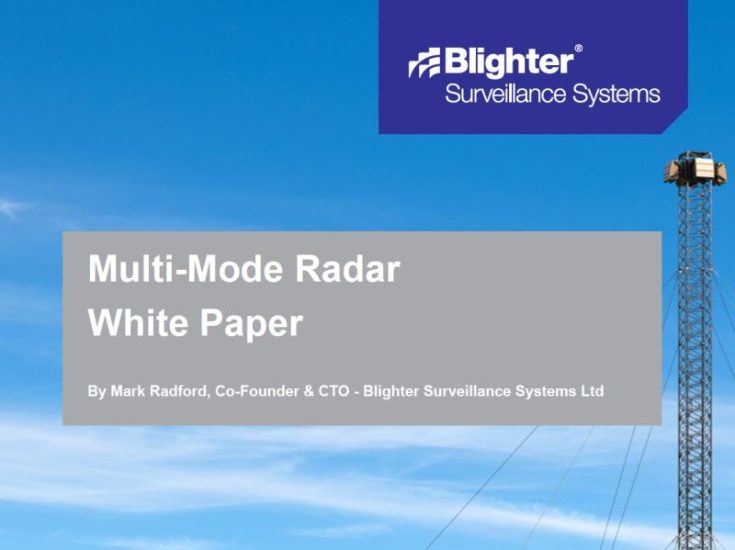Blighter Surveillance Systems has published a white paper describing the evolving radar technology and the role played by multi-mode radar.
According to the paper, the majority of radars on the market at present offer only a single mode of operation or apply the mode for one application directly to another application despite mismatches in target type and radar environments. However, radars are now becoming available that offer the operation of all three modes simultaneously and these multi-mode radars enable optimal performance in each of the three domains in which they operate: air, ground and water. The multi-mode radar needs to be able to handle simultaneously the complex operational needs of each unique environment:
- For ground surveillance, slow moving ground-based targets of interest need to be detected in heavily cluttered environments and amongst 100s or 1,000s of other moving objects.
- In the airspace domain, it is comparatively uncongested and while traditionally only manned aircraft have been of concern, the contemporary challenge is in detecting small unmanned aircraft while filtering out and ignoring birds.
- Over water, the dominant challenge is in the removal of sea clutter, and near the shore, especially the ability to filter out the effects of breaking waves. The modern threat of small and covert boats further adds to the challenge.
The multi-mode radar necessarily needs to point its radar beam in the direction of interest either in the air or pointing down near the land or water. The multi-mode radar needs to be able to rapidly change waveforms on the fly so that for instance it can detect small hobby drones at short range with a fast update rate, while over water, still be able to detect larger boats and ships at much greater ranges. This diversity of waveforms and the need for low-latency switching of operational modes demands that much of the core radar design is digital.
Large, military grade transportable and naval multi-mode radars have been available for decades, but it is the capability of new digital technology that has allowed the size and the cost to be reduced to affordable levels. However, it is also interesting to speculate if this the tri-mode capability would have been necessary if it were not for the recent growth in the misuse of drones.
Find the white paper here
For more information visit:




